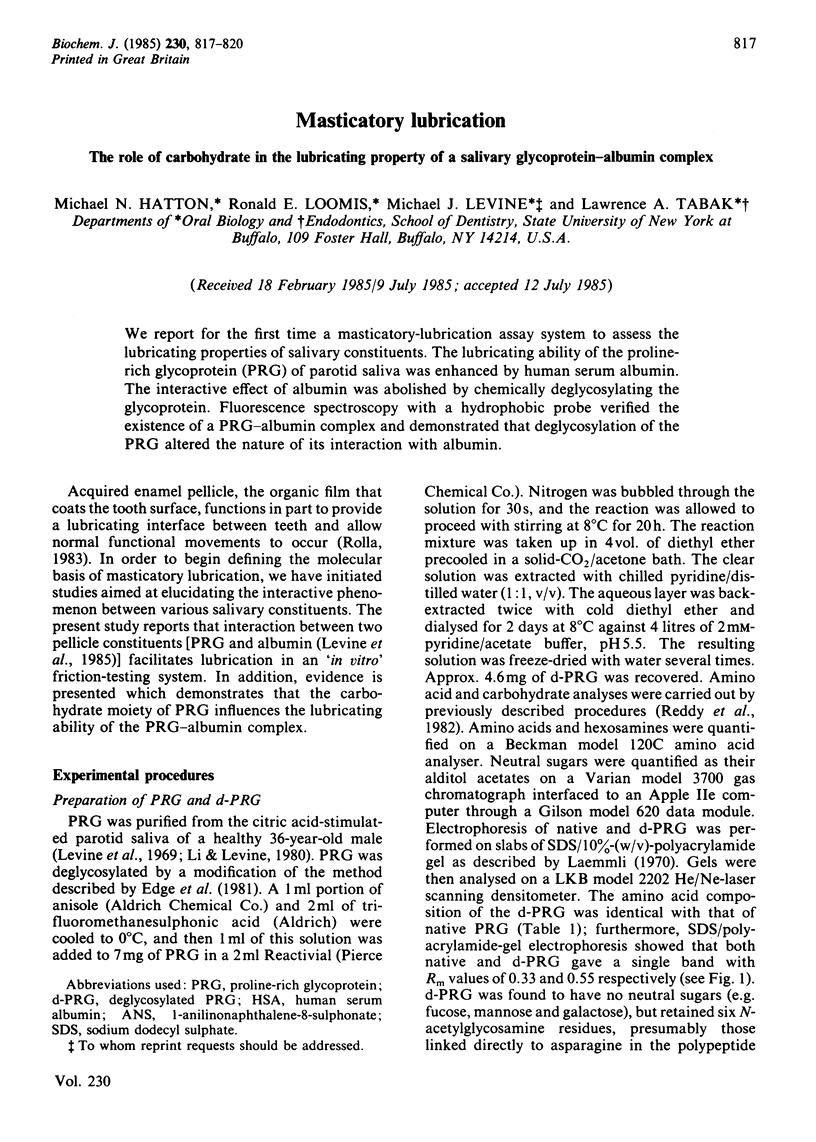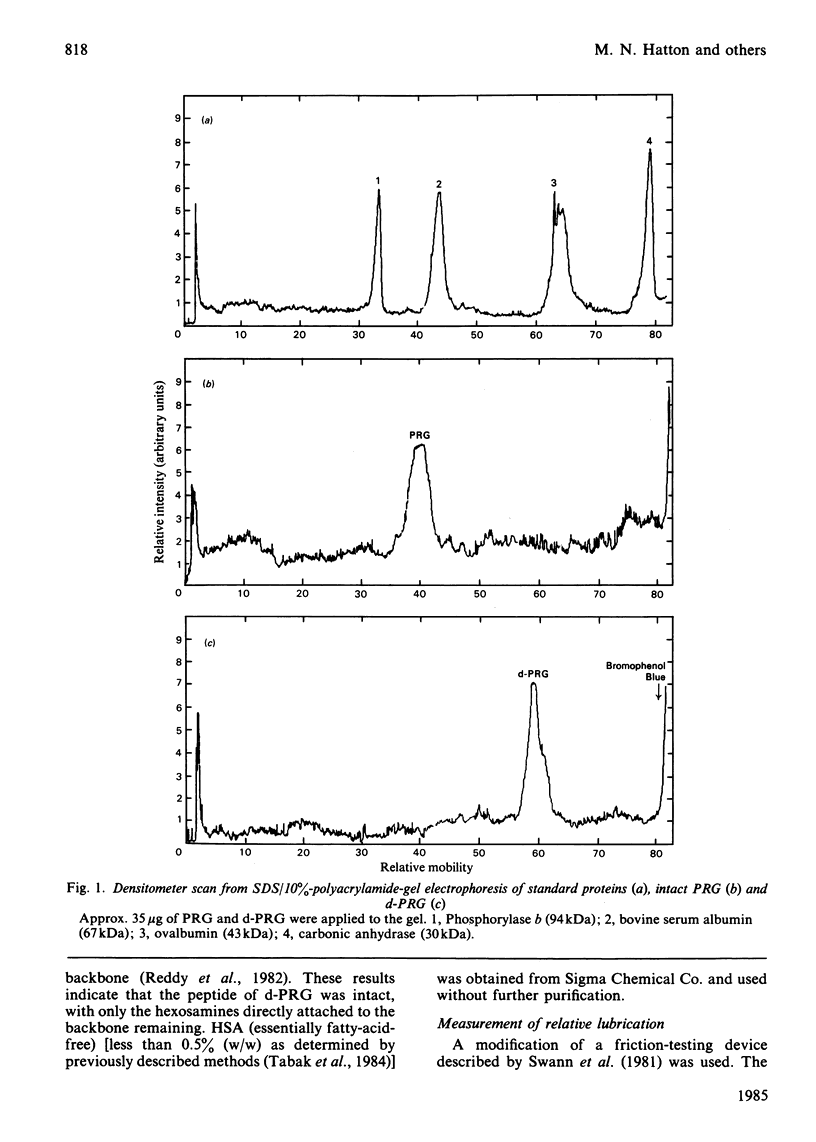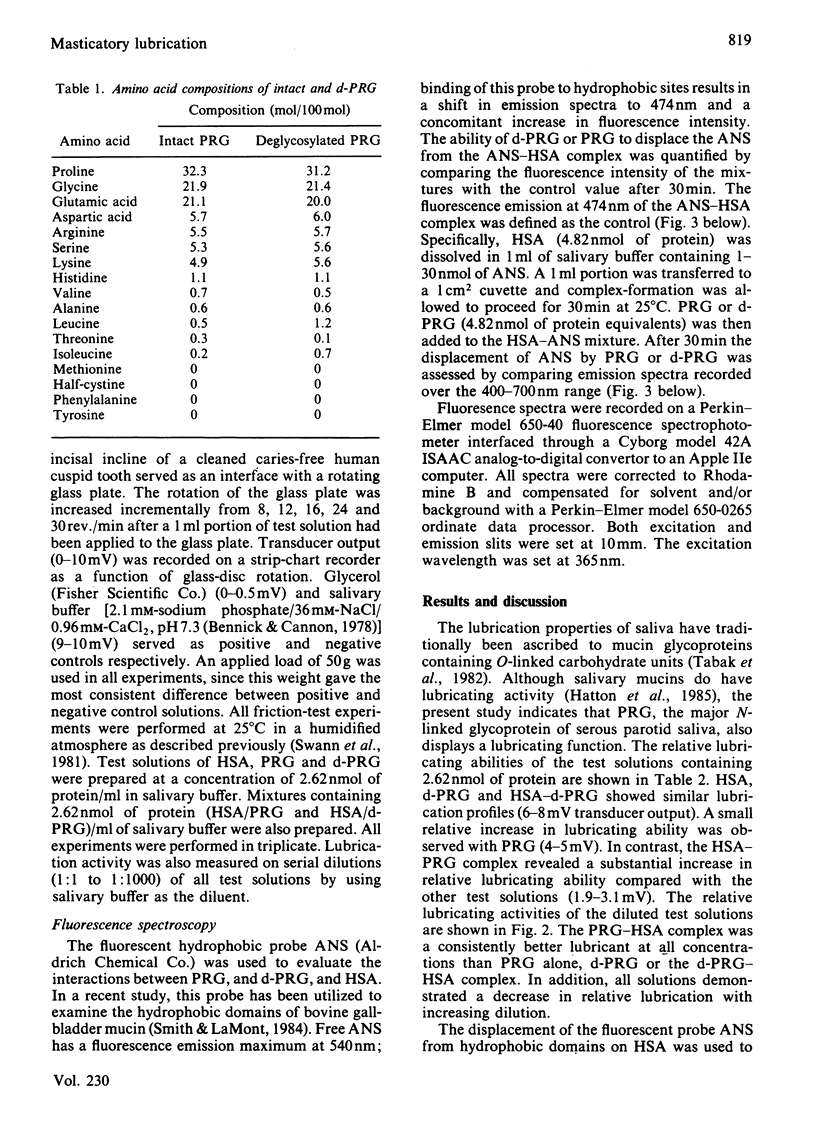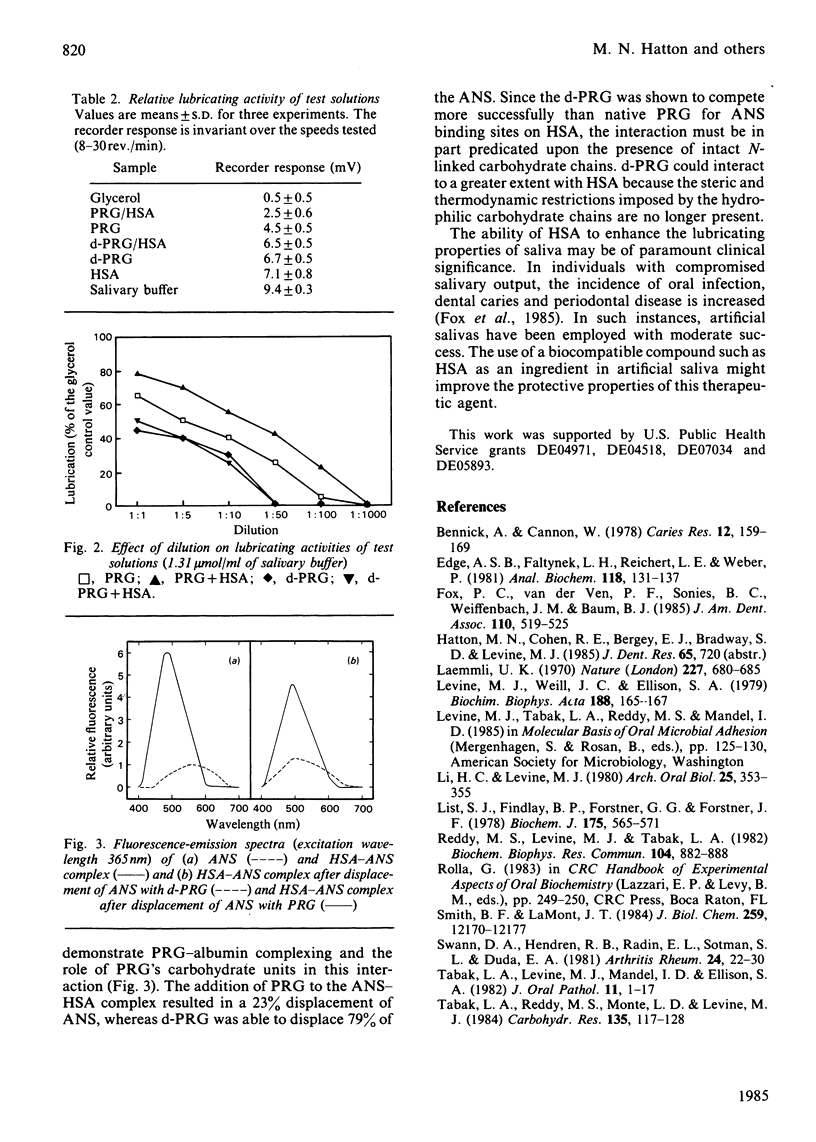Abstract
We report for the first time a masticatory-lubrication assay system to assess the lubricating properties of salivary constituents. The lubricating ability of the proline-rich glycoprotein (PRG) of parotid saliva was enhanced by human serum albumin. The interactive effect of albumin was abolished by chemically deglycosylating the glycoprotein. Fluorescence spectroscopy with a hydrophobic probe verified the existence of a PRG-albumin complex and demonstrated that deglycosylation of the PRG altered the nature of its interaction with albumin.
Full text
PDF



Selected References
These references are in PubMed. This may not be the complete list of references from this article.
- Bennick A., Cannon M. Quantitative study of the interaction of salivary acidic proline-rich proteins with hydroxyapatite. Caries Res. 1978;12(3):159–169. doi: 10.1159/000260326. [DOI] [PubMed] [Google Scholar]
- Edge A. S., Faltynek C. R., Hof L., Reichert L. E., Jr, Weber P. Deglycosylation of glycoproteins by trifluoromethanesulfonic acid. Anal Biochem. 1981 Nov 15;118(1):131–137. doi: 10.1016/0003-2697(81)90168-8. [DOI] [PubMed] [Google Scholar]
- Fox P. C., van der Ven P. F., Sonies B. C., Weiffenbach J. M., Baum B. J. Xerostomia: evaluation of a symptom with increasing significance. J Am Dent Assoc. 1985 Apr;110(4):519–525. doi: 10.14219/jada.archive.1985.0384. [DOI] [PubMed] [Google Scholar]
- Laemmli U. K. Cleavage of structural proteins during the assembly of the head of bacteriophage T4. Nature. 1970 Aug 15;227(5259):680–685. doi: 10.1038/227680a0. [DOI] [PubMed] [Google Scholar]
- Levine M. J., Weill J. C., Ellison S. A. The isolation and analysis of a glycoprotein from parotid saliva. Biochim Biophys Acta. 1969 Aug 12;188(1):165–167. doi: 10.1016/0005-2795(69)90060-9. [DOI] [PubMed] [Google Scholar]
- Li H. C., Levine M. J. Characterization of a glycopeptide from the proline-rich glycoprotein of human parotid saliva. Arch Oral Biol. 1980;25(5):353–355. doi: 10.1016/0003-9969(80)90046-1. [DOI] [PubMed] [Google Scholar]
- List S. J., Findlay B. P., Forstner G. G., Forstner J. F. Enhancement of the viscosity of mucin by serum albumin. Biochem J. 1978 Nov 1;175(2):565–571. doi: 10.1042/bj1750565. [DOI] [PMC free article] [PubMed] [Google Scholar]
- Reddy M. S., Levine M. J., Tabak L. A. Structure of the carbohydrate chains of the proline-rich glycoprotein from human parotid saliva. Biochem Biophys Res Commun. 1982 Feb 11;104(3):882–888. doi: 10.1016/0006-291x(82)91331-6. [DOI] [PubMed] [Google Scholar]
- Smith B. F., LaMont J. T. Hydrophobic binding properties of bovine gallbladder mucin. J Biol Chem. 1984 Oct 10;259(19):12170–12177. [PubMed] [Google Scholar]
- Swann D. A., Hendren R. B., Radin E. L., Sotman S. L., Duda E. A. The lubricating activity of synovial fluid glycoproteins. Arthritis Rheum. 1981 Jan;24(1):22–30. doi: 10.1002/art.1780240104. [DOI] [PubMed] [Google Scholar]
- Tabak L. A., Levine M. J., Mandel I. D., Ellison S. A. Role of salivary mucins in the protection of the oral cavity. J Oral Pathol. 1982 Feb;11(1):1–17. doi: 10.1111/j.1600-0714.1982.tb00138.x. [DOI] [PubMed] [Google Scholar]
- Tabak L. A., Reddy M. S., Monte L. D., Levine M. J. Isolation and characterization of tracheobronchial mucin from a laryngectomee. Carbohydr Res. 1984 Dec 15;135(1):117–128. doi: 10.1016/0008-6215(84)85009-0. [DOI] [PubMed] [Google Scholar]


